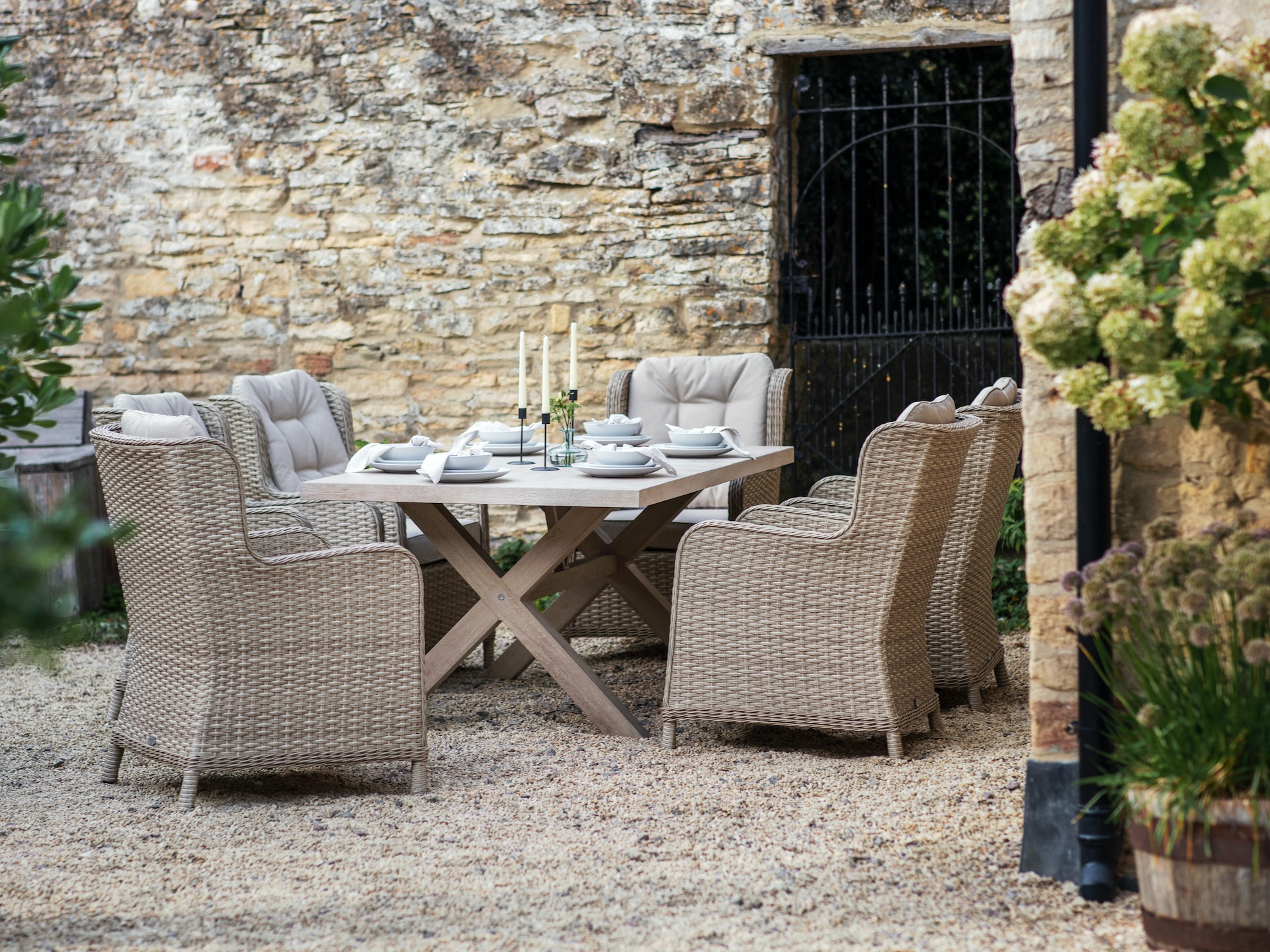
Image credit: Gates Garden Furniture
How to clean garden furniture – experts reveals their maintenance dos and don’t
After everything the weather throws at our gardens over winter, the first warm day of spring is a chance to take stock of any damage and get the space ready for a summer of outdoor living. And first on the list for inspection? Our garden furniture.
Whether it’s been shoved in the shed or left under cover outside, it’s no doubt in need of a little TLC. And that’s before the sudden changes in forecast we’re likely to suffer through the summer. “Your garden furniture endures a lot, from scorching sunshine to sudden showers and storms,” says garden furniture expert Emily Murison at Gates Garden Centre. “Neglecting care and upkeep of your set could lead to a decline in appearance or, worse still, costly damage.”
“Cleaning and revamping garden furniture is a hot topic, with many of us reluctant to just buy new amid the cost of living crisis and the impact on the environment that can have,” adds Laura Rich, product design lead at Furniturebox. There are plenty of ways to clean and style your existing outdoor furniture that are low-cost and eco-friendly.”
So try these hacks for tables and chairs, sofas and loungers, and use the money you save towards other easy garden updates or simply a bottle of something fizzy to enjoy as you relax in your garden.
Cleaning garden furniture – what you’ll need
Henry Paterson, cleaning expert at Housekeep, has a full list of materials you’ll need for the job:
- A bucket
- Washing-up liquid
- Microfibre cloths
- Rubber gloves
- An old toothbrush
- White distilled vinegar
- Garden hose (optional)
Optional for restoration:
- Rust remover
- Rattan furniture spray
- Wood garden furniture polish/restorer
- Garden paint
Best to avoid:
- Bleach
- Abrasive equipment, like scourers or steel wool
1. Give furniture a deep clean at least once a year
“Taking the time to carefully clean your garden furniture at least once a year will help to prolong the life of the set,” says Emily. “To begin, set aside all upholstery in a dry and well-ventilated place. For metal furniture, use a non-abrasive sponge or cloth and clean with a bucket of warm soapy water. For wooden furniture, follow the same process, but for this you can also use a hard bristle brush to remove grime.”
“An old but clean washing-up brush is ideal, too, as it won’t scratch the material,” adds Laura. “Avoid using abrasive cleaning products, including bleach on any outdoor furniture – even on white plastic as these chemicals can corrode surfaces.”
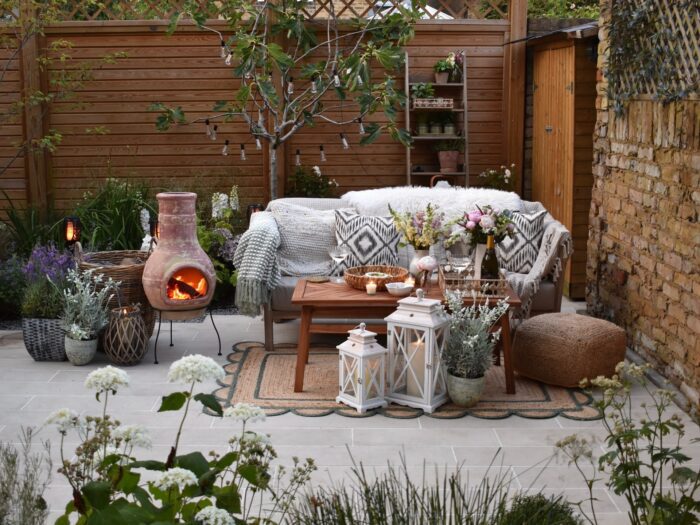
Cleaning garden furniture is a key part of getting a garden ready for spring, when you bring your furniture out to use for the first time – but it’s also worth doing as you ‘put your garden to bed’ in the autumn.
2. Think twice before using a pressure washer on wood
“Make sure not to use a pressure washer on outdoor furniture, especially not on wooden, rattan, wicker or marine-grade rope furniture,” warns Emily. “This is because using extreme pressure may cause the wood grain to lift and cause weave to splinter or rope to fray.” Laura Rich prefers to use a garden hose, and only resorts to a pressure washer for very stubborn moss.
“If the stains or marks are not coming out of wooden patio furniture, you can use a small cap of bleach in a bucket with lukewarm water,” continues Emily. “But be sure to test a patch out of sight first – perhaps underneath a table or chair and allow it to dry to test for any discolouration.”
Pressure washer manufacturer Karcher gives slightly different advice, stating on its website that: “Garden furniture made of hardwood, such as robinia, oak, teak, or bamboo, can easily be cleaned with a pressure washer”. But it does warn that “garden owners should be careful with wooden furniture made of spruce or beech, as their surface can quickly be damaged by excessive water pressure or appliances”.
If in doubt, test out your pressure washer’s power on a sacrificial piece of wood beforehand. It might also come with a brush attachment, which will do a better job of targeting the jet of water while allowing you to scrub simultaneously.
3. Treat wood with a three-step approach
“When it comes to looking after wooden garden furniture, I recommend a three-step approach – clean, protect and shield,” says Emily. “For example, to clean hardwood like teak, use a dedicated teak cleaner, then allow the wood to dry before applying a teak protector, followed up by teak shield. The protector will prolong the brightness of hardwood helping to retain its natural colour, whilst the shield will create a barrier to the elements, keeping wooden furniture cleaner for longer.”
Shop this tip: Furniture Clinic teak restoration kit, £44.95, Amazon
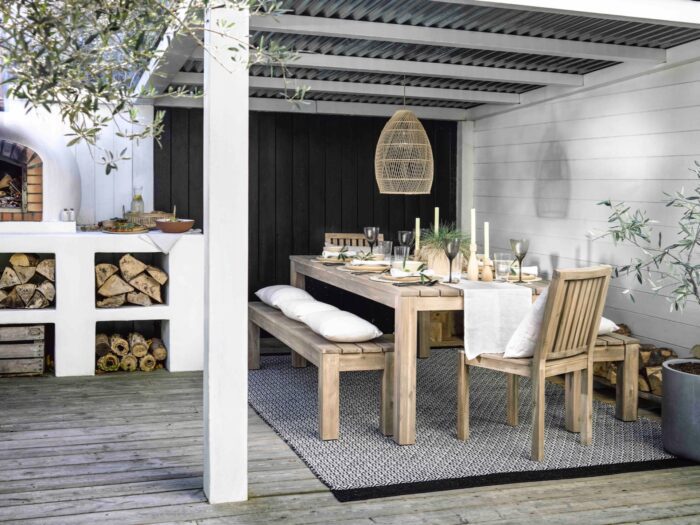
“Remember to always test a small patch underneath your wooden bench, seat, or table first to check you are happy with the look,” she adds. “If you want to retain and maintain the bright colour of the grain, this routine once every year or two will keep outdoor wooden furniture fresh and like new.”
“You can allow hardwood to turn silver-grey naturally without using protector or shield. But don’t skip the cleaning step, as this will remove garden grime, sticky tree sap, or bird lime which can be unsightly and unhygienic, especially on an outdoor dining table,” adds Emily.
4. Use a £1 hack to get plastic furniture clean
Plastic furniture might not be as popular as it once was, but it’s still a common material for kids’ tables and chairs, as well as outdoor play sets. And while it can take no time at all to get grubby, there’s a budget-busting way to clean it, using household items that can be purchased for around £1 from most supermarkets.
“Mix 1-part baking soda with 16 parts warm water,” reveals Laura. “For more stubborn spots, sprinkle baking soda then rub in a gentle circular motion. Wash and wipe down. Mildew spots can be treated with a spray of undiluted white vinegar. These ingredients are also far less harmful to the environment than many other cleaning products with harsher chemicals, so you can wash these down the drain without worry.”
5. Clean and protect metal furniture from rust
Henry Paterson has a tried and trusted method for cleaning metal furniture. “Dampen your cloth in your bucket of detergent and water and wring off as much as possible,” he says. “Use your damp cloth to wipe the furniture fully. You can use an old toothbrush to tackle any more stubborn marks.”
“If you notice any rust on your garden furniture, you’ll want to tackle this during the clean,” he continues. “You can clean this off using distilled white vinegar. Apply directly to the rust and leave to sit for 30 mins. Then cover in salt to add abrasion, and scrub gently using a soft cloth. Then rinse fully. Once fully wiped and all marks/rust removed, rinse thoroughly using a garden hose or bucket of water. Then leave to air-dry fully.”
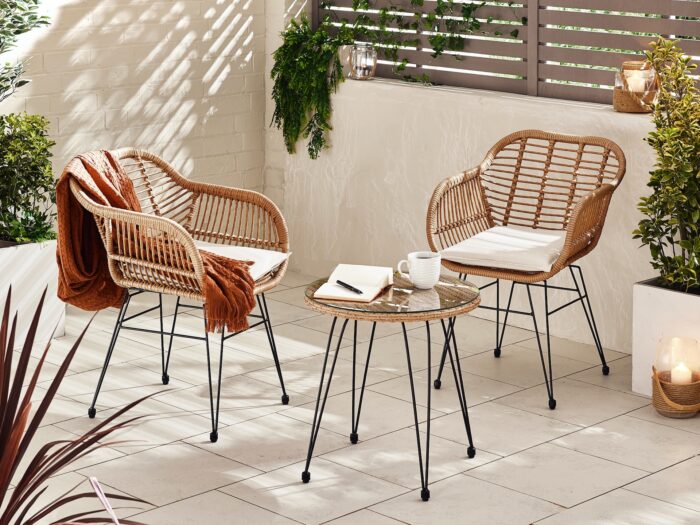
If there is extensive chipping or you’ve had to remove rust, consider repainting the furniture using a
weather-resistant paint. “Metal garden furniture is usually designed to be a little more hardwearing, but it can benefit from some extra love to prolong its life,” says Laura. “Use steel wool to remove rust and wipe away any debris. Then apply anti-rust paint for exterior use, taking extra care on any areas where scratches might have gone through the existing top layers of paint. You can even use a clear anti-rust spray as a sealant if you want to preserve the existing lived-in patina.”
“Once dry, add a layer of car paste wax with a soft cloth to provide extra weather-proofing protection and a bit of shine.”
Shop this tip: Hammerite Direct-to-Rust exterior spray paint, black satin finish, £10.92, Amazon
6. Tackle woven furniture gently
“Cleaning rattan garden furniture is a similar process to cleaning metal furniture,” says Henry. “Simply wipe down with a damp cloth – or use a toothbrush for stubborn marks – then leave to air dry.”
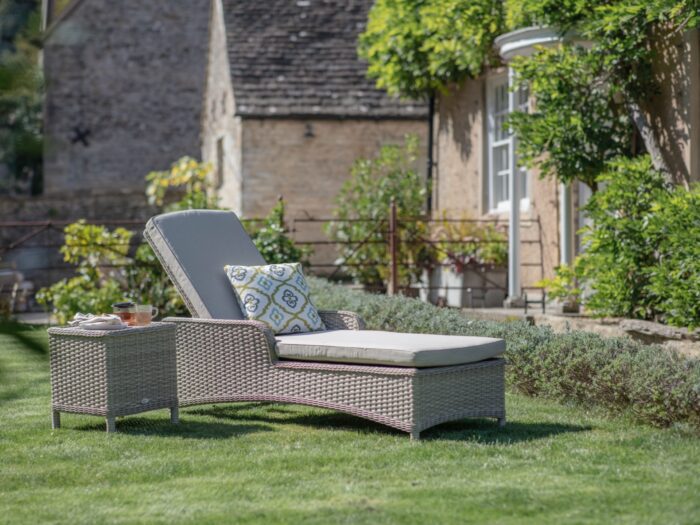
“If your furniture doesn’t need a full clean, you can spruce it up using a vacuum with the brush attachment or any other kind of clean household brush. You can also purchase an off-the-shelf rattan cleaning product to be sprayed and wiped for regular maintenance.”
7. Vacuum and wipe down upholstery
“If your furniture set includes upholstery such as cushions or scatters, the key is knowing how to look after them properly, to avoid damage,” says Emily. “Garden furniture sets often include cushions made from specialist outdoor materials, which means they can be left outside, but always read the care label to make sure.”
“To clean, gently brush away debris with a clean dustpan and soft brush, then vacuum the upholstery to remove any loose grime. For anything that can’t be machine washed, carefully wipe with soapy water and allow to fully dry. Specialist upholstery cleaning products are also available for more stubborn stains.”
8. If in doubt, don’t keep it out
“If you are not sure how to care for your outdoor upholstery and there are no instructions, always take precautions by storing cushions in a safe dry place after use. This will prevent rainwater damage and keep them fresh and clean ready to use next time,” advises Emily. “I always recommend storing cushions when not in use, as this stops bird lime and garden grime from spoiling the fabric.”
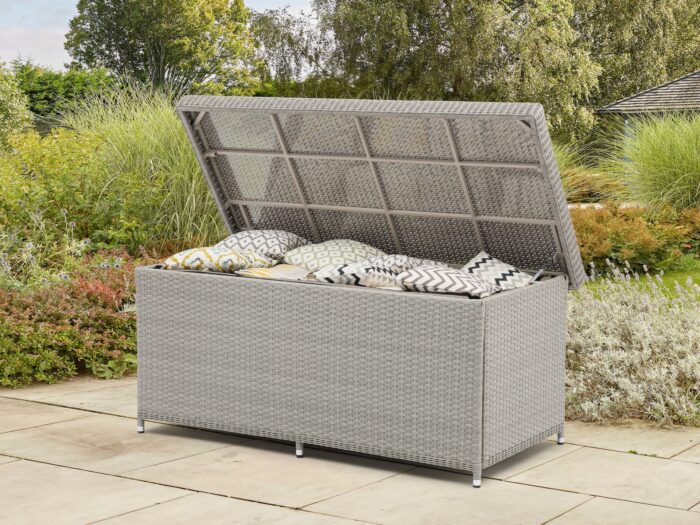
“It is important at the end of summer that all outdoor cushions are stored away in a dry environment,’ she adds. “This will keep them clean and ready to use the following year and will also prevent mildew. Just remember to only store them once they are fully dry.”




